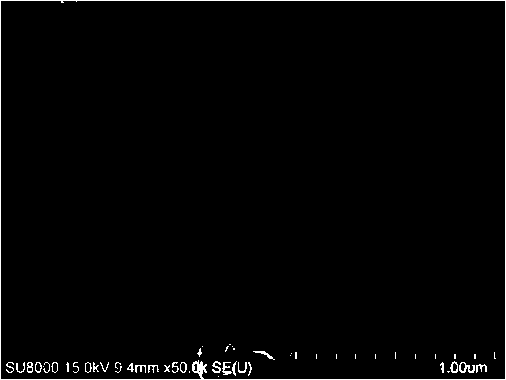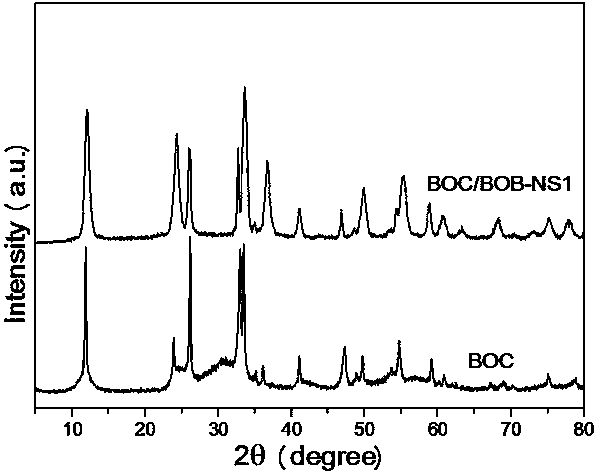Preparation method of bismuth oxychloride@bismuth oxybromide composite ultrathin nanosheet of three-dimensional structure
A bismuth oxychloride, three-dimensional structure technology, applied in catalyst activation/preparation, chemical instruments and methods, physical/chemical process catalysts, etc., can solve the problems of cumbersome operation process, limited improvement space, cumbersome preparation process, etc. Simple, avoid performance degradation, and easy to operate
- Summary
- Abstract
- Description
- Claims
- Application Information
AI Technical Summary
Problems solved by technology
Method used
Image
Examples
Embodiment 1
[0013] Dissolve 1mmol of bismuth nitrate pentahydrate and 1.2mmol of sodium dodecylbenzenesulfonate in 25mL of mannitol solution with a molar concentration of 0.1M, stir at room temperature until completely dissolved, and slowly add 5mL of saturated sodium chloride solution into the above solution, Continue to stir to obtain a white turbid solution. Transfer the obtained solution to a hydrothermal reaction kettle for hydrothermal reaction at 160°C for 3 hours. After cooling to room temperature, centrifuge and wash the white precipitate formed by the reaction with deionized water and ethanol respectively, and then vacuum at 60°C. Dry the product ultra-thin bismuth oxychloride nanosheets; then disperse 3g of the obtained ultra-thin bismuth oxychloride nanosheets into 200mL saturated potassium bromide solution, stir at 90°C for 24h and vacuum dry to obtain the three-dimensional structure of bismuth oxychloride@bromine Bismuth Oxide Composite Superbo Nanosheet BOC / BOB-NS1.
Embodiment 2
[0015] Dissolve 1mmol of bismuth nitrate pentahydrate and 1.2mmol of sodium dodecylbenzenesulfonate in 25mL of mannitol solution with a molar concentration of 0.1M, stir at room temperature until completely dissolved, and slowly add 5mL of saturated sodium chloride solution into the above solution, Continue to stir to obtain a white turbid solution. Transfer the obtained solution to a hydrothermal reaction kettle for hydrothermal reaction at 160°C for 3 hours. After cooling to room temperature, centrifuge and wash the white precipitate formed by the reaction with deionized water and ethanol respectively, and then vacuum at 60°C. Dry the product ultra-thin bismuth oxychloride nanosheets; then disperse 3g of the obtained ultra-thin bismuth oxychloride nanosheets into 300mL saturated potassium bromide solution, stir at 90°C for 24h and vacuum dry to obtain the three-dimensional structure of bismuth oxychloride@bromine Bismuth Oxide Composite Superbo Nanosheet BOC / BOB-NS2.
PUM
 Login to View More
Login to View More Abstract
Description
Claims
Application Information
 Login to View More
Login to View More - R&D
- Intellectual Property
- Life Sciences
- Materials
- Tech Scout
- Unparalleled Data Quality
- Higher Quality Content
- 60% Fewer Hallucinations
Browse by: Latest US Patents, China's latest patents, Technical Efficacy Thesaurus, Application Domain, Technology Topic, Popular Technical Reports.
© 2025 PatSnap. All rights reserved.Legal|Privacy policy|Modern Slavery Act Transparency Statement|Sitemap|About US| Contact US: help@patsnap.com



